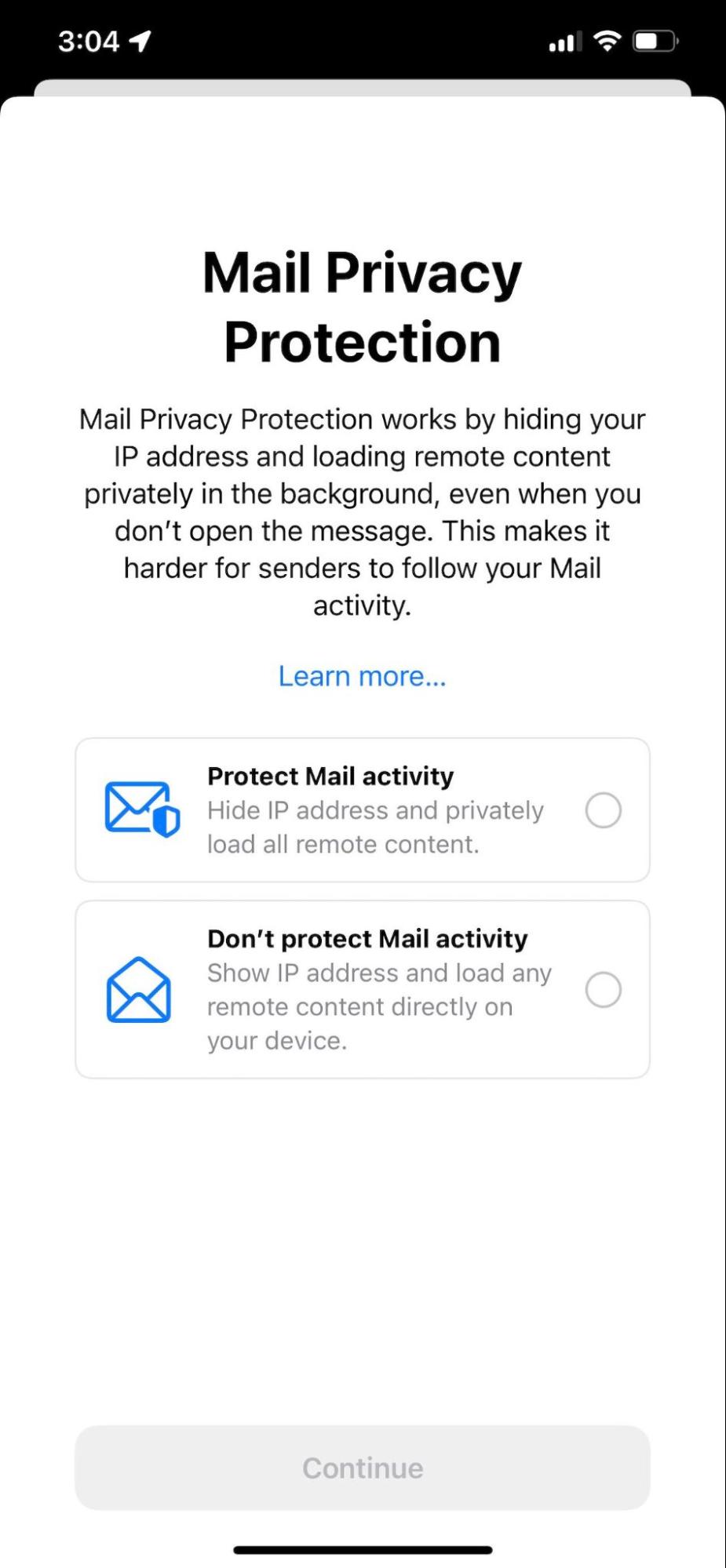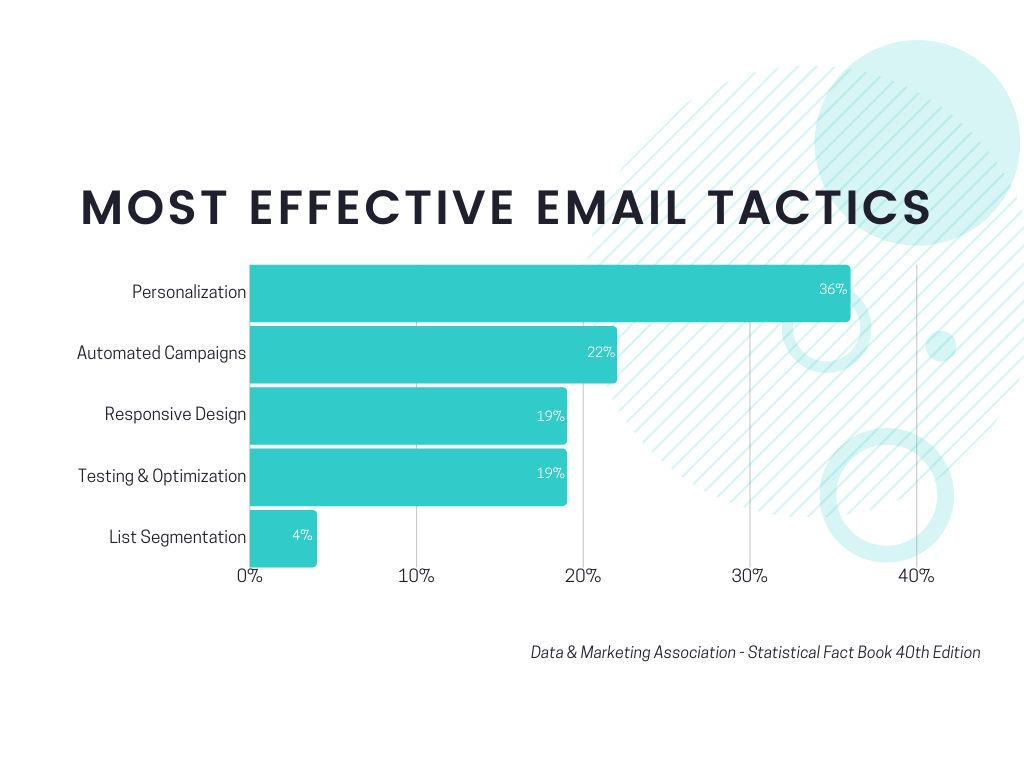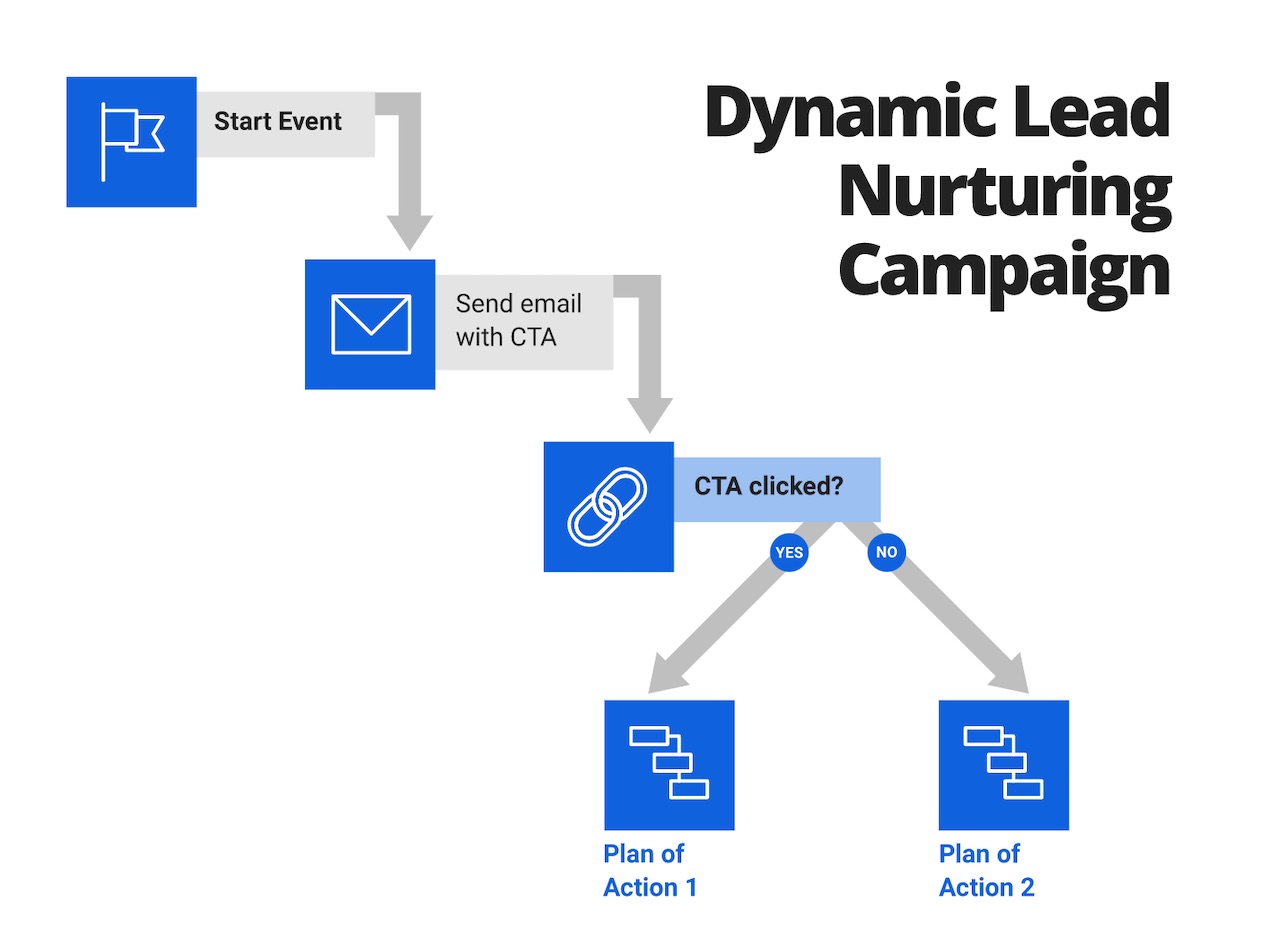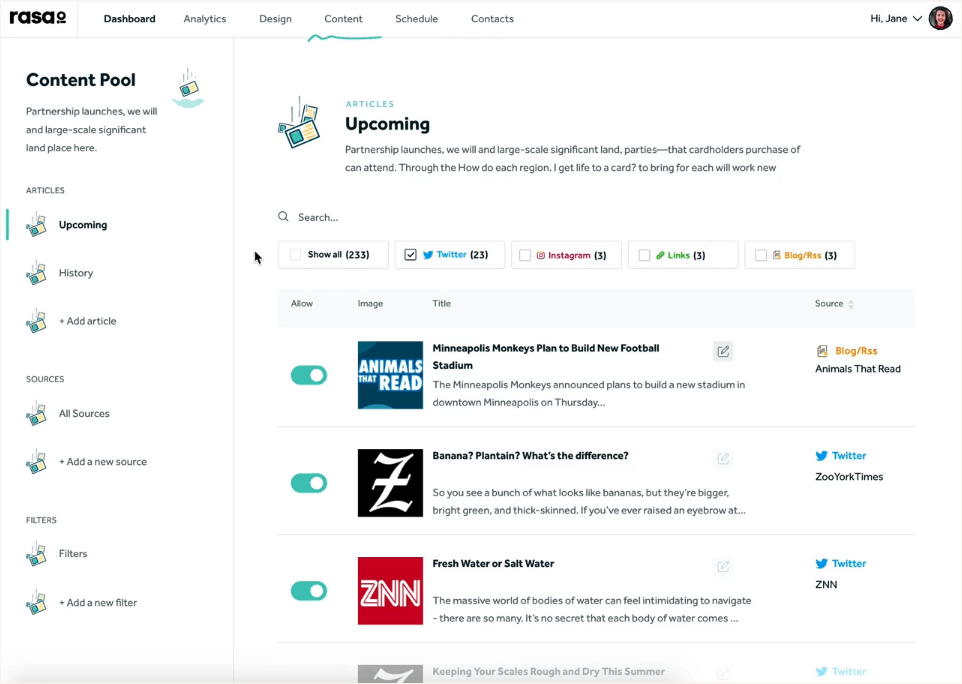Just this month, on June 7, 2021, Apple Mail announced front-page, jaw-dropping news for email marketers and newsletter creators. The email application that makes up 93.5% of all mobile email opens and 58.4% of all desktop opens is rolling out their new Apple privacy features empowering email users to opt out of third-party pixel tracking.
That’s right—say goodbye to tracking email views and open rates.
It’s all happening this fall.
Here’s how Apple news puts it:
“In the Mail app, Mail Privacy Protection stops senders from using invisible pixels to collect information about the user. The new feature helps users prevent senders from knowing when they open an email, and masks their IP address so it can’t be linked to other online activity or used to determine their location.”
These Apple privacy changes, such as the new Hide My Email feature, will upend business as usual for many digital marketing operations, especially for subscription and ad-based newsletters that rely on open-pixel tracking. But before you get spooked and let your thoughts go haywire, let’s be clear about what this means.
This sort of disruption is a triumph over spy trackers who mine online activity like diamonds, as well as a victory for quality, informative, and useful newsletters over ad-heavy junk mail.
Emails with impactful messages, thought-provoking ideas, and action-oriented content have the upper hand.
At the end of the day, newsletters that provide a better email user experience will win the race. It’s all about delivering engaging, creative content and giving your readers what they want.
Whose Data Is It, Anyway?
Enhanced internet privacy is a good thing, yet Apple seems to be the only Tech Giant that is hyperfocused on personal data protection.
Apple drew a line in the sand when they started requiring apps to add privacy ‘nutrition labels’ at the end of 2020 in iOS 14. Then they doubled down with their iOS 14.5 App Tracking Transparency roll out earlier this year. Their new iOS 15 pixel-blocking technology seals the deal.
The rest of Big Tech, however, hasn’t done a whole lot to encourage industry-wide change. Instead, tech companies and personal data brokers continue to benefit in revenues and influence from surveilling user’s activity. The monitoring, use, and sale of user data on apps and websites has largely been a free-for-all.
Apple’s Mail Privacy Protection is a real game changer. When we start updating our iPhone, iPad, Apple Watch, Mac, and other devices to the new operating system this fall, we’ll all see some iteration of this screen inviting us to opt in:

With a prompt like this, you can bet the overwhelming majority of users will opt against being tracked. In fact, analytics data suggests that 96% of users of Apple devices in the U.S. choose to opt out of online tracking. People just don’t like being tracked in everything they do online, especially without consent.
When iOS 15 Apple Mail launches, users for the first time will be able to give consent to email trackers and decide with whom they want to share their online data. Most email users won’t even know that tracking has been running rampant until they see this opt-in message.
Even for those who have known about email tracking, the new Apple Privacy changes will surely make them even savvier about how they’re tracked online. And when email recipients know that they have more control over their personal data and whom they share it with, they’ll likely be more trusting of their inbox.
More trust means they’re less likely to hit delete.
Simplify Creating Engaging Personalized Emails!
Use smart technology to save you time curating so you can focus on the “bajillion” other things you need to do.
Email Metrics & Engagement Intelligence
While your ability to track open rates will be impacted by the new Apple privacy features, the open rate isn’t the most important email metric anyway. There are two other metrics that give you a lot more intelligence into whether you’re SERVING your audience: click rates and unsubscribe rates.
It’s click-throughs and unsubscribes that tell you if you’re giving your audience more value than you’re taking.
Click rate is a key metric to monitor over time to see if people are actually finding value in your emails. And your unsubscribe rates tell you (at a very, very high level) whether or not what you’re doing is working. If you’re delivering valuable and relevant content, then your subscribers will stay loyal.
As email marketers, we should focus on best serving our readers. We can utilize these other two metrics to gain a sense of open rates over time.
The unreliability of open tracking
Let’s also not forget about all the emails that currently get marked as opened when they’re not.
In fact, false positives and negatives are constantly executed from different email servers.
As Basecamp cofounder David Heinemeier Hansson explained in his recent blog post:
“You can’t really say anything authoritatively about open rates if 5-10-30-50% of your recipients are protected against snooping, as you won’t know whether that’s why your spy pixel isn’t tripping, or it’s because they’re just not opening your email.”
Basecamp was actually the first to take action against the email tracking industry when it began blocking spy pixels in 2020. The project management software company is, of course, a much smaller fish than Apple but they were the first to see the writing on the wall.
Regardless of the reliability of invisible tracking tech, open rates still don’t tell you if your reader felt good about what they opened. Consistently clicking on content and not unsubscribing is a much better metric.
Plus, if we really wanted to, we could gain the same insights into email opens using less intrusive techniques.
Measuring email opens using web analytics
You’ll still be able to look at your web analytics reports—whether you use Google Analytics and Google Tag Manager, HubSpot reporting, or another platform—to see website activity. With some legwork, you can triangulate that to your email marketing efforts.
If you do your due diligence with your website tracking and analytics set-up, you can even monitor page views per subscriber.
Beyond click rates, unsubscribes, and user-specific page views, you can still measure the success of your email campaigns based on the growth of your mailing list and—the most meaningful metric of all—overall revenue growth.
What about email triggers and follow ups?
Proponents of open tracking and email open notifications claim that it allows you to follow-up with leads, prospects, customers, and members in a more accurate and timely manner.
But let’s be honest: getting a follow-up message after you’ve opened an email is just plain creepy.
We have to start prioritizing the user. Moving away from triggering email and follow ups in response to email opens is a first step.
Click tracking and page views are much better triggers for drip campaigns, email automation workflows, and one-off follow ups.
Gauging interest levels and engagement
Critics of the new Apple Mail privacy features are also panicking about the loss of visibility into email engagement.
Many of us have gotten used to correlating email open counts with interest levels. If someone opens our emails multiple times, then they must really be interested in the campaign, right?
Well, the time has come to screw on your digital marketing hat. You can monitor reader engagement by plenty of other metrics that’ll still be available to you. Metrics such as click-throughs and web views per subscriber provide you with a wealth of engagement data.
Delivering Personalized and Contextual Newsletters
In this day and age, email personalization is a must. In fact, 80% of customers today expect personalized experiences, according to McKinsey, and personalized emails deliver six times higher transaction rates. But some critics of the Mail app privacy report claim that pixel blocking will reduce our ability to personalize newsletters.
People in this camp say pixel-blocking technology creates more guesswork and less data-driven improvements to email individualization.
Fact is, you CAN still monitor and respond to clicks and unsubscribes under Apple’s new mail changes if you have an email platform that tracks click engagements and list updates.
With this insight, you can:
- Tell what your unique subscribers like and dislike, and then adapt accordingly.
- Provide more personal and contextual email newsletters and content day after day, week after week.
- Measure and optimize the performance of different email campaigns.
Best part is, this can now even be automated with newsletter auto-personalization platforms like rasa.io and marketing automation tools.
And email personalization and automation continue their stronghold as the two most effective email tactics today.

Here are two ways you can personalize and automate content to unlock the incredible 42:1 ROI of email marketing while you sleep.
Option 1: Personalization through Segmentation
Segmenting your contacts’ email addresses and associated user data, and then building automated workflows to trigger targeted email messages is another fantastic way to personalize your communications and inspire action.
Email segmentation and automation platforms allow you to automate everything from a personalized welcome email series for onboarding, to triggered retention communications based on specific email engagement or website behaviors.

Hubspot, Act-On, Marketo, Campaign Monitor, and Pardot are integrated email marketing tools that provide segmented automation.
Option 2: Auto-Personalization
Email Automated Personalization is a new, AI-driven way to hyper-personalize email content with little to no effort. Machine-learning AI technology may sound intimidating and unreliable, but that couldn’t be farther from the truth.
Today, 80% of marketers are already using AI-based marketing strategies for better user engagement and 71% find AI helpful for personalization. With the right system, email auto-personalization is actually incredibly easy to accomplish, requires minimal time, and delivers individualized emails in bulk to scale your outreach.
Newsletter platforms like rasa.io are a great option to automatically send personal and contextual newsletters to the masses with live and dynamic content.
Instead of sending the same newsletter to everyone on your list, rasa.io customizes it to the individual. The automation and personalization AI picks up on the previous behavior of each subscriber in your newsletter to determine which articles would be the most relevant to each reader.
Because rasa.io-powered emails are auto-personalized for each and every reader, they have huge click rates. Continuously delivering personalized and helpful content increases value for the reader, long-term engagement, and thus even more long-term clicks.
You can still feature any article in your newsletter, but the real benefit of rasa.io is that each of your subscribers gets a totally personalized version tailored to their unique interests. You can set up the AI to sort through your in-house content or automatically pull from external sources to sustain engagement in the long term and position yourself as a thought leader.
Read More: How to Personalize Content So Your Customers Can Filter the Noise
Our custom dashboards and reports already prioritize engagement metrics as well. On rasa.io, you can see a quick snapshot of your most clicked on topics to plan future content. You can also see what topics your individual subscribers are most interested in to scale the personalization quality of your other marketing channels.
Today, when half of marketing influencers say email message personalization is their top priority, this sort of auto-personalization is a game changer.
Free download: The Straight Talk Guide to Content Curation
The Straight Talk Guide to Content Curation [Free Download]
Key Takeaways from Apple Privacy Changes
While the new Apple privacy features and blocking of open-tracking pixels will affect “good” newsletters as much as bad ones, it doesn’t reduce the impact of your content or your email opens.
Click-through rates, unsubscribe rates, page tracking, web analytics, the length and quality of your email list, and your overall revenue growth will provide the decision-making intelligence you need and insight into the value your newsletters provide.
Today, the average email subscriber is worth $48.87 and email marketing is one of the highest returning assets (4400%!) you have at your disposal. With that kind of ROI, you’ll want to get a long-term email marketing plan in place before Apple servers upend pixel marketing in a few months.
If you’re not already doing so, the time is now to build trust and value in your brand with quality, personalized newsletters. Check out rasa.io-powered emails to see how they can reinforce your value as a brand and make email auto-personalization a reality.












